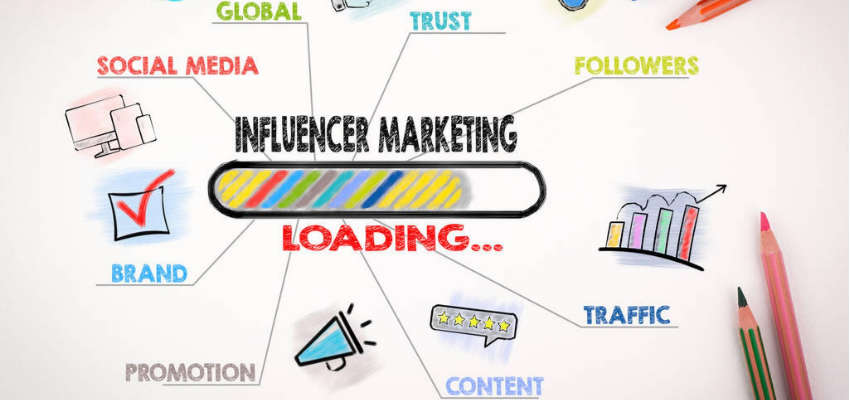Show:
Is Social Media Still a Marketing Stronghold?
Platforms like Facebook, Instagram, LinkedIn, Twitter, and TikTok have become essential tools in the marketer’s arsenal. However, as the digital landscape evolves, it’s crucial to assess whether social media remains the marketing stronghold it once was. Let’s delve into various social media marketing aspects to determine its relevance and effectiveness.

The Evolution of Social Media Marketing
Early Adoption and Growth
Social media marketing began as a way for businesses to reach younger, tech-savvy consumers. Initially, it was cost-effective for engaging with audiences and building brand awareness. Over time, platforms introduced advertising options, sophisticated targeting capabilities, and analytics tools, making social media an integral part of digital marketing strategies.
Current Landscape
Today, social media is more crowded and competitive. Algorithms have become more complex, and organic reach has declined, particularly on platforms like Facebook. Despite these challenges, social media remains a potent tool for marketers due to its massive user base and the ability to interact with consumers in real time.
The Power of Social Media Marketing
Audience Engagement and Brand Building
Social media platforms allow brands to engage with their audience more personally and directly. Through posts, stories, and live videos, businesses can share their brand story, showcase products, and engage with customers. This interaction fosters a sense of community and loyalty among consumers.
For instance, brands like Nike and Starbucks have mastered the art of social media engagement. They use platforms to share their values, connect with their audience emotionally, and respond to customer queries promptly, enhancing their brand image and customer loyalty.
Targeted Advertising
One of the largest advantages of social media marketing is its targeting capabilities. Platforms offer detailed targeting options based on demographics, interests, behaviors, and even past interactions. This precision enables businesses to reach their ideal customers more effectively than traditional advertising methods.
For example, a company selling fitness products can target ads to users who have shown interest in health and fitness, ensuring their marketing efforts are reaching a relevant audience. This level of targeting increases the likelihood of engagement and conversions.
Influencer Marketing
Influencer marketing has become key in social media strategies. Influencers can sway their audience’s purchasing decisions with their substantial followings and credibility. Brands work with influencers to promote their products authentically, leveraging the trust and rapport influencers have built with their followers.

Analytics and Insights
Social media platforms provide robust analytics tools that offer insights into audience behavior, engagement rates, and campaign performance. These metrics enable marketers to track their efforts in real time, make decisions, and optimize their strategies for better results.
For example, tools like Facebook Insights and Instagram Analytics help businesses understand which types of content resonate most, allowing them to refine their content strategies. Marketers can continuously analyze performance data to enhance their ROI and achieve their goals more efficiently.
Challenges and Limitations
Declining Organic Reach
One of the major challenges in social media marketing is the declining organic reach. Algorithms prioritize content from family and friends over brand content, making it harder for businesses to reach their audience without paying for ads. This shift has increased the cost of social media marketing, particularly for small businesses with limited budgets. Instead link building packages are a stronger option for many.
Algorithm Changes
Social media platforms update their algorithms, impacting how content is displayed and who sees it. These changes can disrupt marketing strategies and reduce the visibility of brand content.
Ad Fatigue
As the number of ads on social media increases, users may experience ad fatigue, leading to decreased engagement and ad effectiveness. To combat this, marketers need to create high-quality, relevant, and engaging ads that stand out in a crowded feed. Continuously refreshing ad creatives and experimenting with different formats can help mitigate ad fatigue.
Privacy Concerns
Growing concerns about privacy have impacted social media marketing. Platforms have implemented changes to comply with these regulations, affecting how businesses can collect and use user data for targeting. Marketers must navigate these regulations carefully to avoid legal issues and maintain consumer trust.
The Future of Social Media Marketing
Emerging Platforms
New social media platforms are constantly emerging, offering fresh opportunities for marketers. TikTok, for example, has gained immense popularity, particularly among younger audiences. Its short-form video content format presents unique ways for brands to engage with users creatively.
Marketers should stay abreast of new platforms and trends, experimenting with different channels to find new opportunities for reaching their target audience. Early adoption of emerging platforms can give brands an edge and help them stay relevant in a rapidly changing digital landscape.

Integration with Other Marketing Channels
Social media is increasingly being integrated with other marketing channels to create cohesive, multi-channel campaigns. Combining social media with email marketing, content marketing, and SEO can amplify the effectiveness of each channel and provide a seamless experience for customers.
For example, a brand can use social media to encourage visitors to its website, where users can sign up for a newsletter. The brand can then use email marketing to nurture these leads, offering personalized content and promotions based on their social media interactions. This integrated approach enhances customer engagement and drives conversions.
Advanced Technologies
AI can help with personalized content recommendations, chatbots for customer service, and predictive analytics. AR and VR offer immersive experiences that can engage users in new and exciting ways.
For instance, brands can use AR filters on Instagram to allow users to try on products virtually, or use VR to create interactive experiences that showcase their offerings. Leveraging these advanced technologies can help brands stand out and provide innovative experiences that capture user attention.
Conclusion
Despite the challenges, social media remains a powerful marketing stronghold. Its ability to engage audiences, provide targeted advertising, leverage influencer partnerships, and offer detailed analytics makes it an invaluable tool for businesses. However, marketers must navigate the evolving landscape carefully, adapting to changes in algorithms, privacy regulations, and consumer behavior.
To maximize the benefits of social media, it’s crucial for businesses to stay informed about emerging trends and technologies. Integrating social media with other marketing channels and continuously refining their strategies can help maintain a competitive edge. By doing so, businesses can continue to harness the power of social media to drive brand growth and achieve their marketing goals.
Social media is not just a marketing tool; it’s a dynamic platform that, when used effectively, can propel brands to new heights in the digital age. With the right approach, social media can enhance brand visibility, foster customer loyalty, and generate significant returns on investment.

 Return to Previous Page
Return to Previous Page








